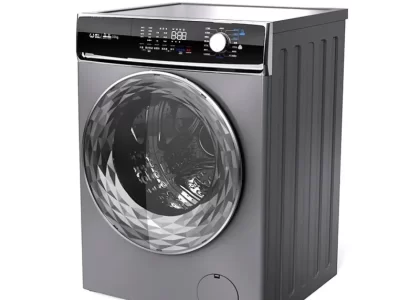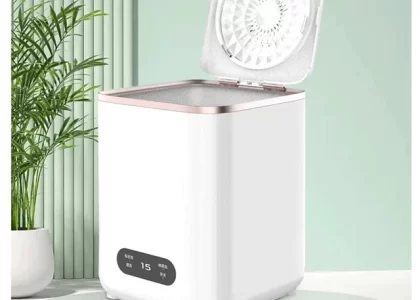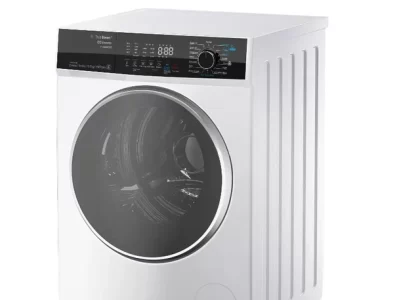 Introduction:
Introduction:
Encountering issues with your washing machine can be frustrating, especially when it’s not agitating but still able to spin and drain. The agitator is responsible for moving the clothes around during the wash cycle, so understanding why it’s not working can help diagnose and resolve the problem. In this comprehensive guide, we will provide troubleshooting steps to help you identify the possible causes and solutions for a washing machine that will not agitate but will still spin and drain.
Here are some common types of washing machines:
There are different types of washing machines available in the market, designed to suit various needs and preferences. Here are some common types of washing machines:
Top-Load Washing Machines:
Top-load washing machines are characterized by their vertical drum orientation and a hinged lid on top. They are popular for their ease of use, as you can simply add clothes from the top. Top-load washers are generally more affordable and have shorter cycle times. They are suitable for those who prefer a traditional washing machine design.
Front-Load Washing Machines:
Front-load washing machines have a horizontal drum orientation and a door on the front. They are known for their superior cleaning performance and energy efficiency. Front-load washers typically use less water and detergent, making them environmentally friendly. They are suitable for those looking for high cleaning efficiency and gentle treatment of clothes.
High-Efficiency (HE) Washing Machines:
High-efficiency washing machines, both top-load and front-load, are designed to use less water and energy compared to traditional models. They are equipped with advanced features such as load sensing, multiple wash cycles, and extended spin cycles. HE machines require specially-formulated HE detergents to ensure optimal performance.
Combination Washer-Dryer:
Combination washer-dryers are designed to save space by combining both the washing and drying functions in one unit. They can be a practical solution for small living spaces or locations where separate washer and dryer installations are not feasible. However, combination washer-dryers generally have a smaller load capacity and longer cycle times compared to standalone washers and dryers.
Portable Washing Machines:
Portable washing machines are compact and lightweight, allowing for easy transport and setup in smaller spaces. They are convenient for apartments, RVs, camping, or situations where a permanent washing machine is not available. Portable washers typically have a smaller capacity and may require manual water filling and drainage.
Smart Washing Machines:
Smart washing machines are equipped with internet connectivity and advanced features, allowing remote control and monitoring via smartphone apps or voice assistants. They offer convenience and customization options, such as personalized wash settings, notifications, and remote troubleshooting.
When choosing a washing machine type, consider factors such as available space, load capacity, cleaning efficiency, energy efficiency, ease of use, and budget. Each type of washing machine has its advantages and considerations, so it’s essential to select one that meets your specific requirements and washing preferences.

Lid Switch
Lid Switch Function:
The lid switch is a safety feature that prevents the washing machine from agitating or spinning while the lid is open.
Ensure that the lid is fully closed during operation to engage the lid switch properly.
Troubleshooting the Lid Switch:
Check the lid switch to ensure it is not faulty or obstructed.
Inspect the lid switch assembly and connections for any signs of damage or loose wiring.
If necessary, replace the lid switch to restore proper functionality.
Drive Belt
Drive Belt Function:
The drive belt connects the motor to the transmission, enabling the agitator and spin functions.
A worn or broken drive belt can affect the agitator’s ability to move.
Inspecting the Drive Belt:
Carefully unplug the washing machine and locate the drive belt, typically located at the bottom of the machine.
Inspect the belt for any signs of wear, fraying, or stretching.
Replace the drive belt if necessary to restore proper operation.
Agitator Dogs or Cogs
Agitator Dogs Function:
The agitator dogs, also known as cogs, allow the agitator to move in one direction during the wash cycle.
Worn or broken agitator dogs can result in the agitator not moving or agitating properly.
Checking the Agitator Dogs:
Remove the agitator cap and inspect the agitator dogs for any signs of wear or damage.
If the agitator dogs are worn or broken, replace them with new ones to restore proper agitating function.
Transmission or Clutch Assembly
Transmission/Clutch Assembly Function:
The transmission and clutch assembly work together to engage the agitator during the wash cycle.
If either component is faulty, the agitator may not move or agitate properly.
Troubleshooting the Transmission and Clutch Assembly:
Consult the manufacturer’s manual or seek professional assistance to diagnose and repair any issues with the transmission or clutch assembly.
Only attempt to repair or replace these components if you have the necessary expertise and experience.
 Motor or Motor Control Board
Motor or Motor Control Board
Motor or Motor Control Board Function:
The motor drives the washing machine’s various functions, including agitating, spinning, and draining.
A malfunctioning motor or motor control board can result in the agitator not moving while allowing other functions to operate.
Testing the Motor and Motor Control Board:
Consult the manufacturer’s manual or seek professional assistance to test the motor and motor control board for any faults.
If either component is determined to be faulty, repair or replacement may be necessary.
 Clean washing machine:
Clean washing machine:
Regular cleaning of your washing machine is important to keep it running efficiently and to prevent build-up of dirt, grime, and odors. Here are some steps to clean your washing machine effectively:
Clean the Exterior:
Start by wiping down the exterior of the washing machine with a damp cloth and mild detergent. Pay attention to any control panels, knobs, and door seals, ensuring they are free of dirt and residue.
Clean the Dispenser and Filters:
Remove any detergent or fabric softener dispensers and soak them in warm, soapy water. Scrub them gently to remove any residue or build-up. Rinse thoroughly and allow them to dry before reattaching.
Clean the Drum:
For top-load washing machines, fill the drum with hot water and add approximately 1 cup of white vinegar or 1/2 cup of baking soda. Run a complete wash cycle using the hot water setting. The vinegar or baking soda will help dissolve and remove any built-up residue, odors, or stains. For front-load washing machines, follow the manufacturer’s instructions for cleaning the drum, as it may require a different process.
Clean the Door Seal:
The rubber door seal of front-load washing machines can accumulate dirt, soap residue, and mildew. Gently wipe down the door seal with a damp cloth and mild detergent. If there is visible mold or mildew, create a mixture of equal parts water and vinegar or bleach and water. Use a toothbrush or soft brush to scrub the affected areas, then wipe clean with a damp cloth.
Run an Empty Rinse Cycle:
Once you have cleaned the drum and door seal, run an empty rinse cycle using hot water. This helps to flush out any remaining vinegar or detergent residue.
Clean the Lint Filter:
Depending on the type of washing machine, locate and clean the lint filter. This could be found near the drum or within the drainage system. Remove any lint or debris that may have accumulated and rinse it thoroughly before reattaching.
Leave the Door Open:
After each use, leave the door or lid of your washing machine open to allow air circulation and prevent the growth of mold or mildew.
Following these cleaning steps regularly, approximately once every few months, can help maintain the cleanliness and efficiency of your washing machine. It is also recommended to refer to the manufacturer’s instructions or guidelines for any specific cleaning recommendations for your particular washing machine model.
 Conclusion:
Conclusion:
When a washing machine will not agitate but will spin and drain, it indicates a specific problem with the agitating function of the machine. By following the troubleshooting steps outlined in this guide, you can identify potential causes such as a faulty lid switch, drive belt, agitator dogs, transmission/clutch assembly, or motor/motor control board. Careful inspection and proper diagnosis can help you determine the necessary repairs or replacements needed to restore the agitating function of your washing machine. If unsure about the complexity of the repair, it is advisable to seek professional assistance to ensure the safety and proper functioning of the appliance.




